
How IoT is Revolutionizing Agriculture: Key Innovations and Future Prospects
Discover how IoT is transforming traditional farming through key innovations, real-world success stories, and future trends that are shaping the agricultural sector.
Recapping key takeaways from Ukraine IT Report 2022
For the first time in its history, the IT industry has transformed from a highly-niche sector into a trailblazing domain attracting as many as 54% of Ukrainian high school students and foreign investments worth on average $300-700 million a year.
IT Ukraine Association has recently published a comprehensive Ukraine IT Report 2022. We at rinf.tech couldn’t help recapping its most interesting and thought-provoking findings for a broader audience. So, here you go.
Ukraine is among five European countries that create two-thirds of IT value-added in the region (along with Romania, Poland, Czechia, and Hungary).
As of 2021, the Ukrainian IT exports market is assessed at 6.8 billion, accounting for 37% of all service exports from the country.
On average, exports of IT and software services from Ukraine have seen a 27% increase annually for four consecutive years.
The main growth drivers are the US (40% of exports) and the UK (10%).
In 2020, Ukraine’s IT generated:
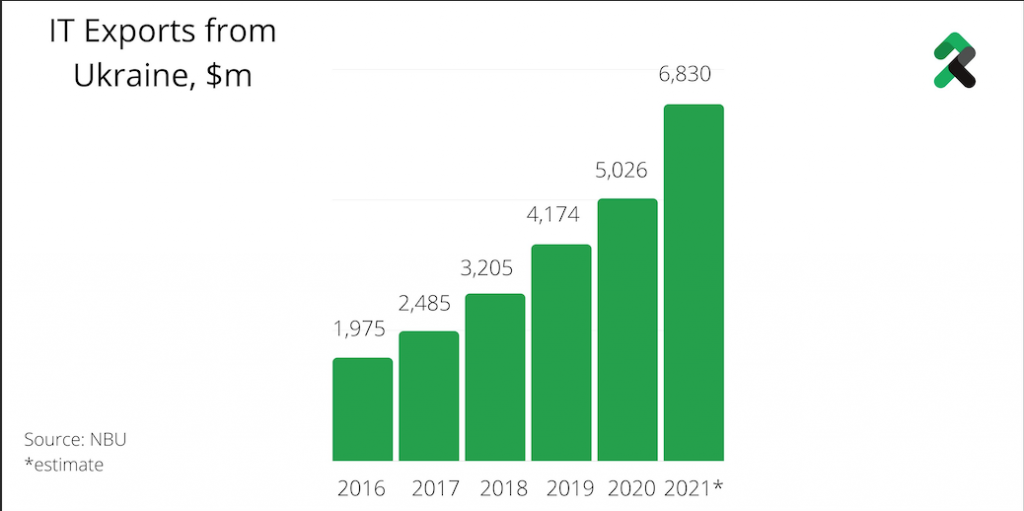
In the baseline scenario, Ukraine’s IT sector could double its export revenues over the next four years.
Demand for IT services and relatively high salaries lead to a significant increase in the number of IT talents in Ukraine. Cooperation with Individual Entrepreneurs (IE) is attractive for companies because IT often involves project work. The IT industry actively attracts young people: 80% of employees of IT companies are aged 18 to 32.
As of 2021, the Ukrainian tech talent pool counts 285,000 specialists: 80% have IE contracts with IT companies.
In addition, 25% of all IT specialists and 32% of management are female.
Significant demand for Ukrainian talents is due to the high educational level of Ukrainians. Ukraine ranks 47 out of 189 (between the UAE and Italy) according to the UN Education Index 2021. In general, the education index of Ukraine corresponds to the level of Western countries. A typical Ukrainian IT specialist has a higher (often technical) education, an average English proficiency (80% have an intermediate level), and an average work experience of 3 years or more.
According to Korn Ferry’s 2021 IT Rewards Study, the labor market in Ukraine is quite fragmented, as evidenced by the differences in wages within the same position. The salaries of project managers (PMs) vary little by region. The salaries of tech specialists in the capital are up to 25% higher than the national average.
Speaking about Ukrainian IT specialists’ remuneration, the monthly median for different positions looks as follows:
Regions with below-average wage levels are economically more attractive for companies to enter.
Of the 1,700 educational institutions in Ukraine, 150 offer undergraduate programs in IT. The most powerful educational centers form clusters of companies in their regions.
Ukrainian universities annually prepare about 17,000 new bachelors. The increased interest of applicants in the specialty and state funding for education will increase the number of graduates to 23,000 in 2025. In the medium term, up to 35,000 bachelors are expected to graduate due to the peak birth rate in 2008-2013.
Most bachelor’s graduates (54% in 2020) choose to enroll in a master’s program. Colleges and technical schools graduate junior specialists. The modernization of the curricula of technical schools and colleges is a potential point of growth for the IT industry.
In 2021, engineering and computer science were the two most popular majors, followed by automation and cybersecurity.
IT business is an interested stakeholder in the education system of Ukraine. So far, the demand for new IT specialists significantly exceeds the capabilities of Ukrainian higher educational institutions (HEIs). The response to this was the emergence of numerous non-formal IT education institutions offering intensive training courses for junior-level specialists. Non-formal education annually trains and adds 10,000-12,000 new IT specialists to the national pool. According to the forecasts of the Ukraine IT Association, in the coming years, their number will grow to 20,000-25,000.
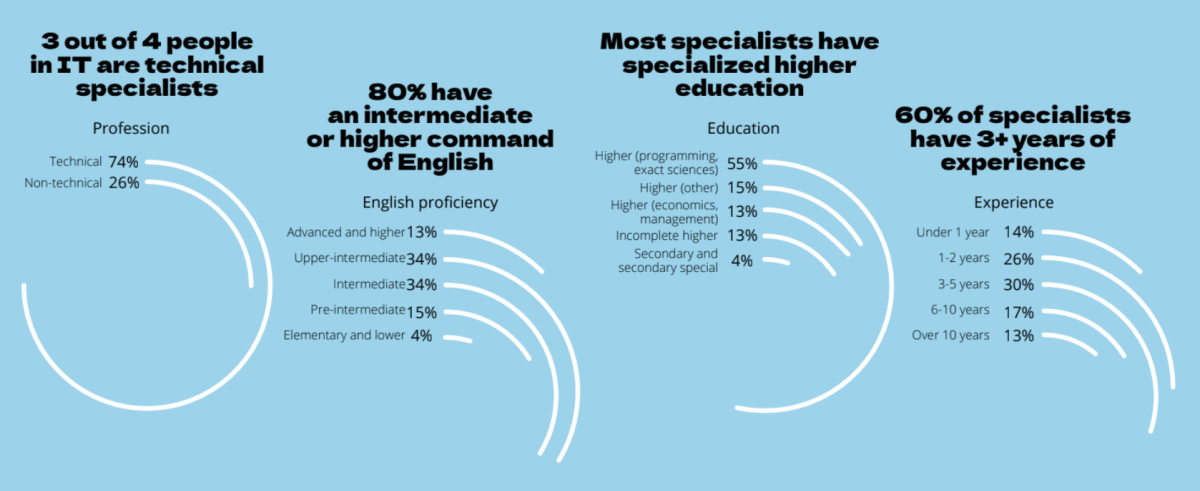
Image: IT Ukraine Association
From 2022, the government is expected to introduce a special legal framework for the IT industry – the so-called Diia City.
It will apply to the entire territory of Ukraine and should provide several benefits for IT companies that choose to become Diia City residents: a special tax regime, special (more flexible) forms of attracting IT specialists (gig and labor contracts), additional legal instruments in the field of investment protection and corporate governance.
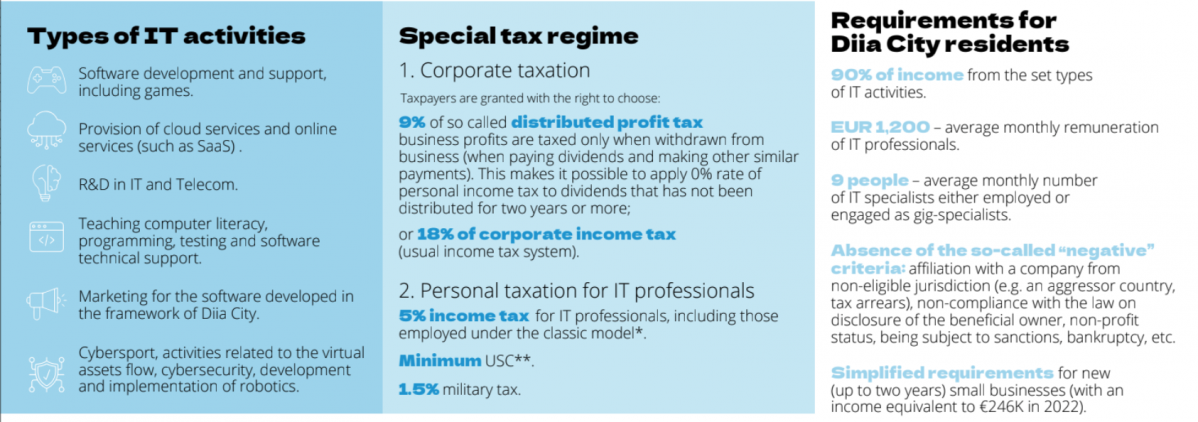 Image: IT Ukraine Association
Image: IT Ukraine Association
Given the long-standing dialogue between the IT industry and the authorities, the implementation of Diia City will be seen as an additional stimulus for the growth of the digital economy in Ukraine.
The Ukrainian IT industry actively attracts foreign investments for its development. On average, deals and transactions concluded are worth $300-700 million annually. Most of the deals are related to investments and grants for startups (Seed and Pre-seed stages), but most of the funding goes to some of the largest companies.
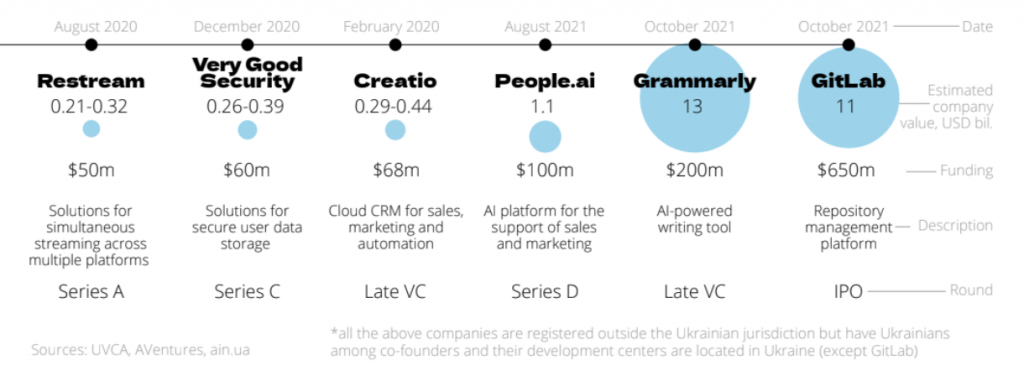
In IT, remote work is a common thing: IT projects, in particular outsourcing projects, involve remote collaboration with clients.
The COVID-19 pandemic is additionally forcing people to work outside the office. Instead, this gives additional opportunities for IT businesses:
As a result of the pandemic:
Should the quarantine restrictions be lifted, 42% of companies in Ukraine plan to return at least part of their employees to the office.
For more insights and trends pertaining to the Ukrainian IT industry in 2022, please check out the actual Report by IT Ukraine Association.

Discover how IoT is transforming traditional farming through key innovations, real-world success stories, and future trends that are shaping the agricultural sector.
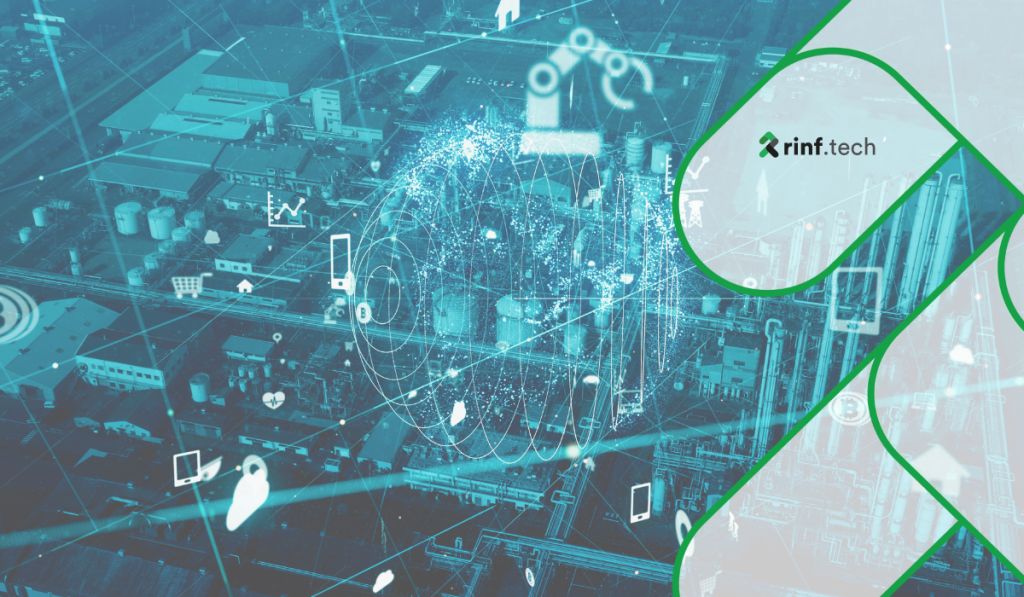
Delving into the IoT device onboarding requirements, challenges and implementation best practices across smart home, industrial, and healthcare settings.

Delving into the complexities of AIoT, exploring its core principles, current state, challenges, and future trends.
Copyright © 2023 rinf.tech. All Rights Reserved.
Terms & Conditions. Cookie Policy. Privacy Policy.
Politica Avertizari de Integritate (RO)